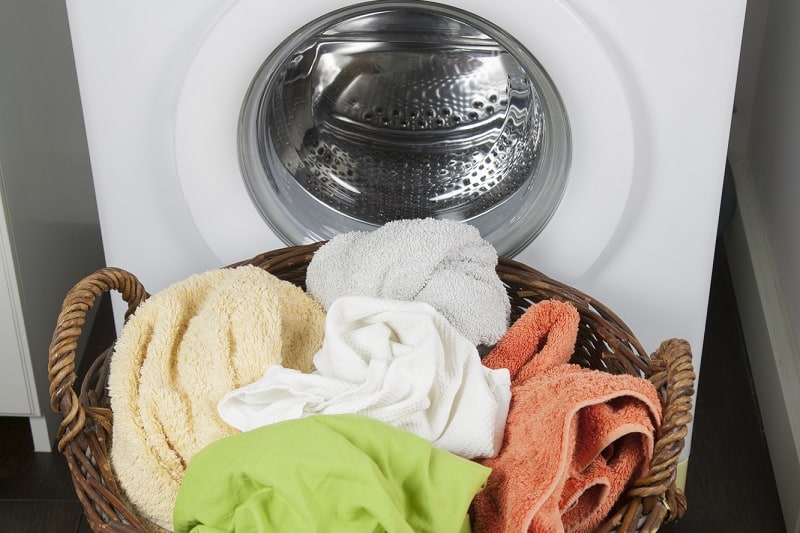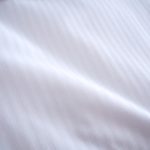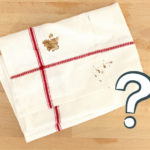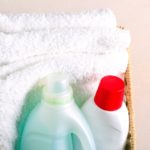Washing towels and sheets together seems like a no-nonsense way to do your laundry. You can throw them in the washing machine at the same time to be more efficient, save on energy bills, and effortlessly keep your laundry chores under control.
But aside from the fact that they’re both used daily, towels and sheets have little in common. They’re made from different materials with unique textures, washing instructions, and uses.
So, can you wash towels with sheets? Or do they need to be washed separately?
Unfortunately, the internet seems divided on this seemingly simple question, but we are here to set the record straight.
In this article, you’ll first learn the problems with laundering towels and sheeting in one load, and then how to overcome these issues for effective cleaning and care.
Do Towels Need to Be Washed Separately from Sheets?
As with many questions, the answer isn’t straightforward. The answer is, it depends!
The decision to wash towels and sheets together or separately hangs on your preferences, the specific items you’re washing, and the condition you want to maintain for your linens.
While it is generally safe to wash towels and sheets together, here are a few reasons why some people might choose to wash them separately.
1. Towels produce lint

The friction between items being laundered and the washing machine causes tiny fibres to be released, known as lint.
Towels tend to be made of cotton and produce more lint than sheets and pillowcases. New towels in particular are big lint producers.
If you wash towels and sheets together, there’s a possibility that lint from the towels could transfer onto the sheets, affecting their appearance and texture.
2. They’re made of different fabrics
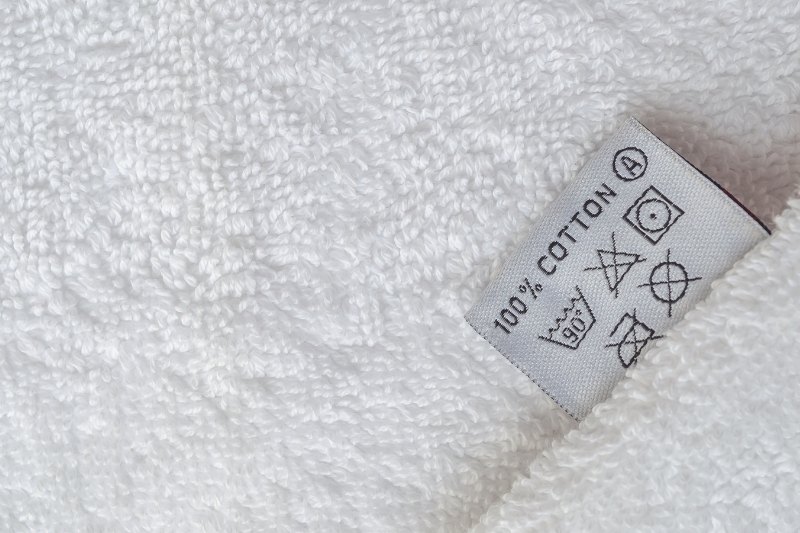
Some sheets are made from delicate fabrics that require more gentle care.
Mixing these delicate materials with towels, which are textured and can be more abrasive, could potentially cause damage to the sheets over time.
The difference in materials also often means your towels and sheets have different care instructions.
Towels are thicker and tend to need longer cycles with faster spin speeds for an effective clean, whereas delicate sheets and pillowcases need more gentle washing.
The same applies to drying—heavy towels need much longer in the tumble dryer than thin sheets.
3. The load might be too heavy
Depending on the size of your washing machine, including both towels and sheets in the same load might result in overcrowding.
This could impact the effectiveness of the wash, as there might not be enough space for proper agitation and cleaning.
Even if there appears to be enough space for your towels and sheets in the drum, it’s also crucial to consider the maximum weight capacity.
Towels are heavy items, and they become even heavier when soaking wet. Washing towels and sheets together could put added strain on your washer in its spin cycle and lead to unnecessary wear and tear.
4. You shouldn’t use fabric softener on towels
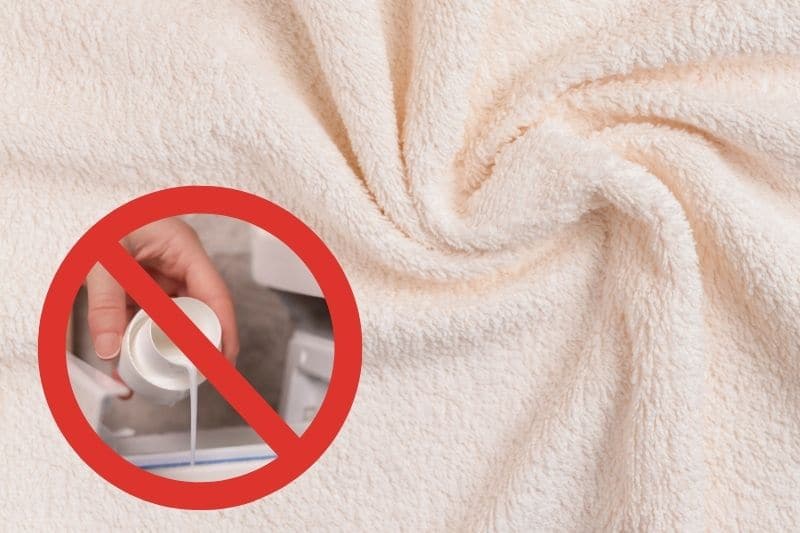
Towels are designed to be highly absorbent, and using fabric softeners will reduce their absorbency over time.
However, many people love using fabric softener on their sheets. We all know nothing is better than snuggling down in soft, freshly washed sheets.
If you want to use fabric softener on your bedding and maintain the absorbency of your towels, they cannot be laundered together.
5. They have different temperature requirements
Dirty towels quickly accumulate germs and bacteria. According to one study, almost 90% of bathroom towels were contaminated with coliform bacteria.
To remove these germs, towels need to be washed at high temperatures of 60°C or above in order to kill bacteria.
However, sheets usually need to be washed at a lower temperature than towels. They’re often made from blended materials, and washing them with towels at a high temperature can cause shrinkage.
That said, polyester or microfibre sheets are known to withstand the highest temperature settings.
Can You Wash Towels and Sheets Together?
Although there are several reasons against washing towels and sheets together in the same load of laundry, it is possible if (and it’s a big if!) you follow specific guidelines.
These best practices ensure that your towels and sheets are properly cared for and mitigate many of the issues mentioned above.
Below are all the must-follow guidelines for effectively washing your towels and sheets together:
1. Wash similar colours together
As with all loads of laundry, colour separation is crucial for success. Make sure that the towels and sheets you’re washing together are of similar colours, as mixing light towels with darker sheets (or vice versa) could lead to colour bleeding and staining.
If you have both dark and light towels and sheets, consider washing the darks together and the lights together.
2. Check the care labels first
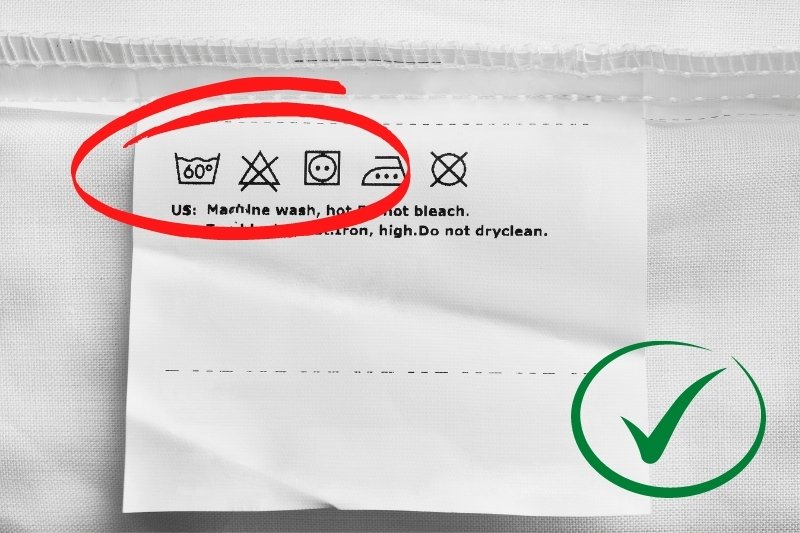
Always check the care labels on your towels and sheets to ensure they can be washed together before chucking them in your washing machine.
Most cotton towels and sheets can be laundered together without any issues. However, if you have delicate or special fabrics, it’s best to separate them to prevent potential damage.
3. Don’t overload your washing machine
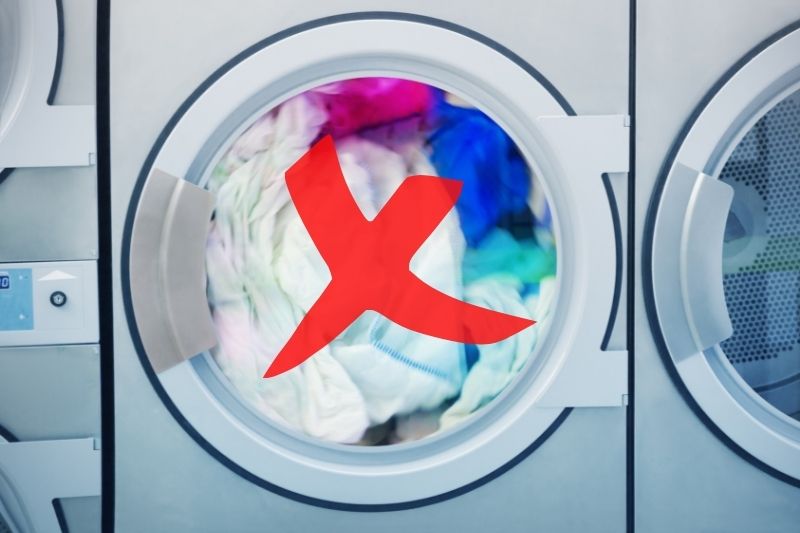
Both towels and sheets are bulky items, and cramming as many in the washing machine as possible can be tempting.
However, overloading a washer can lead to inadequate cleaning and increased wear and tear on the fabrics, as well as cause damage to the machine drum.
When loading the machine, make sure there’s enough space for the towels and sheets to move around freely during the wash cycle and split the load into multiple washes if necessary.
Be sure to check your washing machine’s capacity for a better idea of how many towels and sheets you can fit in a single load of washing.
TIP: Our guide on how many towels to put in a washing machine is a helpful starting point to determine whether you have space to add sheets or pillowcases to the load.
4. Use less laundry detergent
When laundering towels, many homeowners complain that the towels feel stiff or hard after washing. This is usually due to too much laundry detergent being used.
The soapy residue binds to the towels, causing them to harden. Therefore, use an appropriate amount of mild detergent when laundering towels and sheets together.
5. Choose a hot wash setting
Towels and sheets harbour a lot of germs that need to be removed through washing. This is especially important for shared or soiled towels and sheets.
According to the NHS, these are considered “high-risk items” and likely to cause illness.
Therefore, you should ideally use a 60°C wash cycle when washing shared sheets and towels. The hot temperature kills all germs and bacteria on the fabric, giving you a hygienic place to sleep and a germ-free towel to dry yourself with after a shower.
A lower 40°C wash should do the job effectively for personal sheets and towels, plus it’s a more energy-efficiency option and better on the pocket.
However, if you’re concerned about bacteria and germs, opt for 60°C washes even for personal items (or the maximum temperature the material can withstand).
Never lower the temperature just for the sake of washing your towels and sheets together.
6. Skip the fabric softener
Fabric softeners shouldn’t be used when washing towels. The conditioner binds to the towel fibres and reduces their absorbency over time.
As towels are made to absorb water, this is an issue—your towels won’t dry as effectively as they used to.
On the other hand, it’s generally safe to use fabric softener for sheets. However, the residual fabric softener reduces the permeability of your sheets, which can make sleeping more uncomfortable for people who get hot at night or suffer from night sweats.
For these reasons, we suggest skipping the fabric softener when washing towels and sheets together.
TIP: If you want softer sheets and towels, these eco-friendly fabric softener alternatives are a great solution that won’t leave a residue on your linens.
7. Air dry your linens
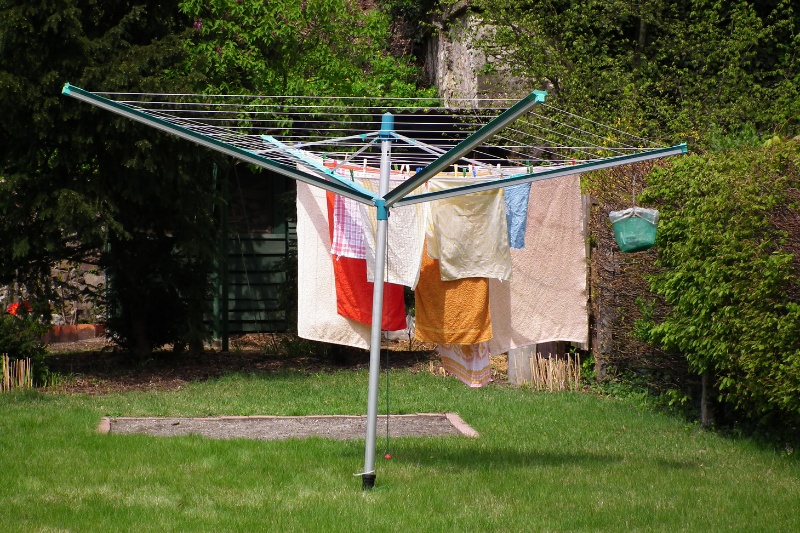
After washing, air dry your sheets and towels outside if possible. This stops your towels and sheets from getting tangled together in the dryer, prevents excessive heat from damaging the fibres, and means it doesn’t matter if your sheets and towels dry at different speeds.
You can use your tumble dryer if you don’t have the space to dry your linens outside. Your towels will take longer to dry, but you must be cautious not to over-dry your sheets—this can lead to excessive wrinkling and potential shrinkage.
Therefore, always tumble dry using a low or medium heat setting and check it frequently, removing your pillowcases and bedsheets once they’re dry.
TIP: Your towels might be a little stiff when dried outside, so consider finishing them in the dryer.
8. Use laundry bags
If you’re concerned about lint transfer from towels to sheets, you can separate them by placing sheets inside a fine mesh laundry bag before washing. These bags won’t trap all the lint fibres but will prevent larger particles from reaching your sheets.
Alternatively, wash the sheets inside out to ensure any lint attaches to the underside of the sheet rather than the material that will be on show.
Washing Towels & Sheets Together: Dos and Don’ts
You CAN wash your towels and sheets together if:
- They are the same colour, either all dark or all lights.
- Your washing machine has a large enough capacity to handle big loads.
- You use slightly less detergent than you would usually.
- You’re happy not to use fabric softener.
- Your sheets aren’t made from delicate materials.
- The towels and sheets can both withstand hot temperatures.
- You can air dry your linens or be willing to take your sheets out of the dryer earlier.
You SHOULDN’T wash your towels and sheets together if:
- Doing so will overcrowd your washing machine.
- You’re washing dog towels with human towels or sheets.
- You’re washing soiled towels or sheets with non-soiled linens.
- You want to use fabric softener on your bedsheets.
- Your sheets cannot withstand washes of at least 40°C.
- You’ve got brand-new towels unless you’re unbothered about lint transfer.
- The care labels for your towels and sheets give different advice.

Hannah has a passion for cleaning. She worked her way around Australia by cleaning hostels in exchange for free accommodation and used her cleaning skills to bag a job as a chalet host for a luxury ski company in France.
